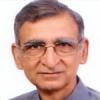Retired Justice of Supreme Court Justice Markandey Katju wrote (26 September 2016) to the Supreme Court judges, “You are aware that one Ikhilaq was brutally lynched by cow vigilantes in Dadri. Instead of severely punishing the perpetrators of this heinous outrage, the police and local judge are proceeding against the family of Ikhlaq…Have the police gone mad?”
Chand Khan alias Shan Khan spent 11 years in a jail in 2002 Akshardham temple attack case before he was acquitted without any compensation so far. Instead he has been booked in a case of cow slaughter. (21 September 2016) There is a book by Mufti Abdul Qayum Abdul Hussain, ‘Eleven Years behind the bars’ (I am a mufti, I am not terrorist). This book tells the story of Mufti Sahab being arrested on charges of terrorist violence, tortured and then was released after spending such a long time in prison. A Muslim boy called Aamir Khan was in prison for 14 long years before he was released. He was booked under the charges of terrorism when he was preparing for his matriculation examination and as he came out of the dark dungeon he had already lost his father and found his mother seriously ill. Reading his book, ‘Framed as a Terrorist’, makes one realize as to what brutal extent the system can go against an innocent individual.
These are just few of the glaring samples from vast number of cases of Muslim youth and men who have faced the situation where their life came to a halt, careers ruined and families destroyed. One can add a large number to this list but couple of more examples is in order, Haji Umarji was in prison for being the mastermind of Godhra train burning and was released after few years of torture as no evidence of any type was found against him. In the infamous cases of terror blasts in Makkah Masjid (Hyderabad), Malegaon, Samjhauta Express and Ajmer blasts large number of Muslim youth were arrested and later released for lack of any credible evidence. Most of the investigations showed the sloppy and motivated investigation done by authorities. It has become a sort of pattern where the bias of police towards minorities becomes obvious. The scholars of communal violence in India tell us that the police did play a neutral role during British period. It was a force which intervened in a neutral way.
The biased attitude of police picks up after independence and right from the first major violence in Jabalpur in 1961, the anti minority attitude of police can be seen. Even the state machinery and political leaderships at times have aggravated this attitude by their policies. Most of the inquiry commission reports, films and documentaries bring out this fact. The representation of Muslims in the state services is miniscule, and those Muslims who are in the position of authority have to go with the flow either by keeping quite or they are given postings in the areas where they can’t influence the dynamics of communal violence.
Shrikrishna Commission report of Mumbai violence showed that many police officers either looked the other way around or sided with those indulging in violence. Same was the case in massive anti Sikh violence (Delhi 1984) and Gujarat violence, to give the few examples. In one case of anti minority violence in Mahararshtra (Dhule 2013) the police itself took up the role of perpetrators of mayhem. In a very revealing book Hashimpura, V.N. Rai ex Director General of police points out that the police deliberately took away truck load of Muslims and shot them point blank and threw their bodies in the canal. It was few of the survivors of the tragedy who told the tale of their harrowing experience.
After 9/11 2001, WTC attack, American media manufactured a phrase ‘Islamic Terrorism’, which cleverly hides US goal of propping up Al Qaeda for controlling oil wealth and projects as if Islam-Muslims are the cause of terrorism in the World. Since then the matters have worsened and not only the broad social thinking but even the state authorities are totally taken in by this propaganda. The global Islam phobia has been cultivated by media and vested interests.
There is an urgent need to protect the innocent young people and others. So many commissions set up for police reforms have given the suggestions for improving the system of policing. We need to sensitize the police personnel to the issues related to minorities in our country. There are state and national level police academies training the police personnel. The curriculum of these academies needs to be modified to incorporate the reality behind the biases and stereotypes which are prevalent in the society. The police needs to be aligned to Constitution rather than being dictated by their sentiments and emotions; they need to understand the truth behind the prevalent social common sense.
There are many civil society groups who are struggling to campaign on these issues, they do take up the cases of many of these being framed by the authorities or being incarcerated, but their capacity is limited. The network working for innocents needs to be strengthened all over the country. Those falsely implicated need to be compensated and the police officers implicating them need to be punished. Many of the books written by the falsely accused people need to be made a mandatory reading in our administrative staff colleges, and academies training the police and other administrators. The political parties who want to uphold the secular values have to isolate the communal outfits and ensure that communal parties don’t come to power. We need a society with justice and peace. Such gross injustice against the people of particular religion shows that our justice delivery system is weak. The culture of any society should be judged by the index as to how justice is delivered to weaker section of society including the religious minorities. Let’s hope Justice Katju’s letter is taken seriouslr!







Comments
Add new comment